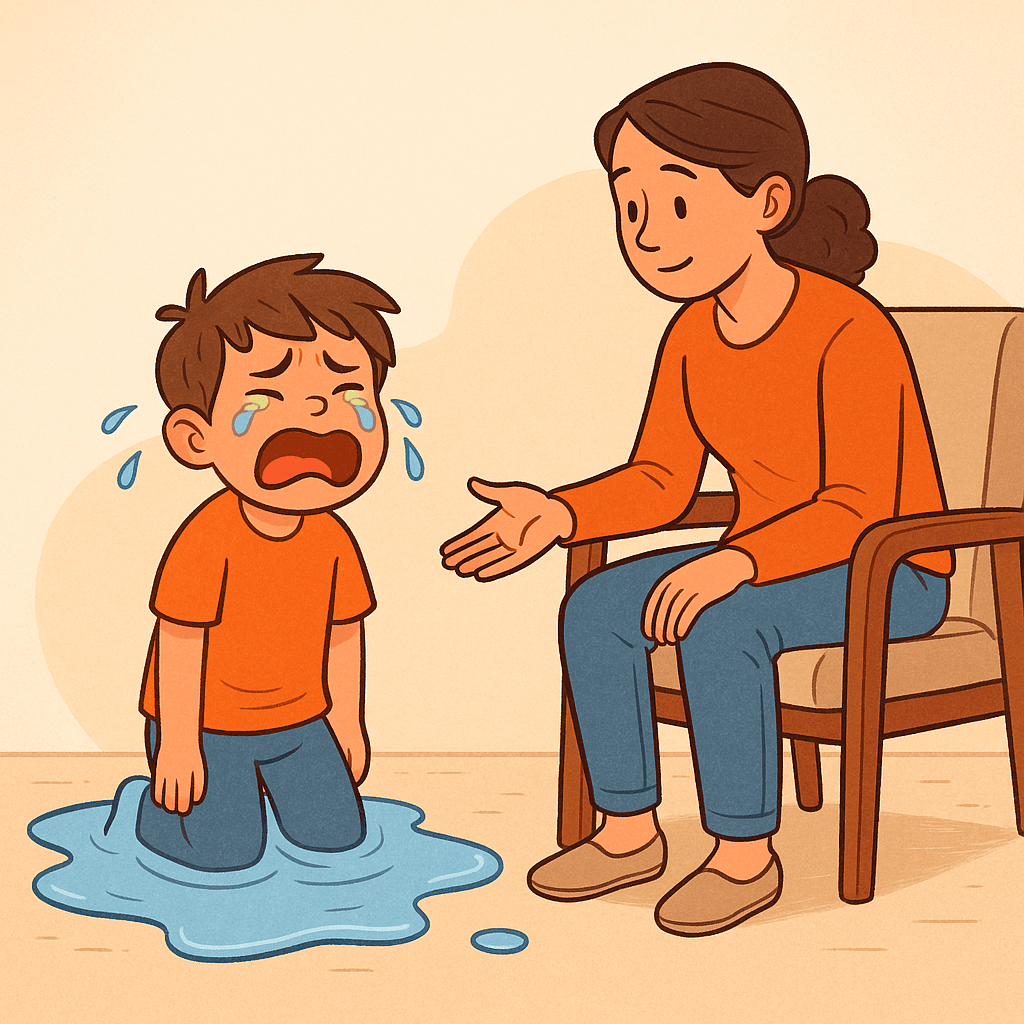
You know the moment.
One second your kid is asking for cereal, the next they’re a sobbing, screaming puddle of feelings on the floor because the milk is in the wrong cup. You're standing there wondering if you’re raising a tiny dictator or if something is actually wrong.
Spoiler alert: Something is wrong. But it’s probably not what you think.
Meltdowns Aren’t Drama. They’re Dysregulation.
Kids don’t have emotional meltdowns to make your life harder. They’re not trying to manipulate you. They’re not even trying to do anything. They’re just trying to survive what feels like a full-body crisis.
At its core, a meltdown is the brain’s alarm system going off. The logical part of the brain (prefrontal cortex) has gone offline, and the emotional brain (amygdala) is in charge. That’s why you can’t reason with them in that moment. You’re not talking to the thinking brain. You’re talking to a nervous system in panic mode.
The Puddle is the Protest
When kids “lose it,” what you’re really seeing is a nervous system protest. Something was too much—a change, a demand, a sensory overload, an emotional trigger—and the system shut down. That’s why even tiny things can cause big reactions. It’s not about what happened. It’s about how full your kid already was.
Imagine holding a cup of water. Now start adding drops. One by one, it looks fine. But eventually, one more drop spills the whole thing. That’s what you’re dealing with: an already-full nervous system that couldn’t hold one more drop.
What You Can Do (Even When You Want to Scream)
It’s tempting to yell. Or reason. Or punish. But in meltdown mode, none of those land well. Here’s what helps instead:
1. Regulate yourself first.
Your calm is contagious. If you lose it too, you’re just fueling the fire. Take a deep breath. Drop your shoulders. Speak slower.
2. Don’t problem-solve right away.
This isn’t the time to talk about the cup or the consequences. The brain can’t take in logic during a meltdown. First, help them feel safe again.
3. Use simple, calming language.
“I’m right here.” “You’re safe.” “Let’s breathe together.” This isn’t babying. It’s co-regulation.
4. Wait for the storm to pass.
Once your kid is calm, then you can reflect. Then you can talk about better choices. But only after the nervous system resets.
5. Notice patterns.
Do meltdowns happen after school? Before meals? When transitioning between tasks? Understanding the patterns helps you get ahead of them.
Meltdowns Aren’t a Moral Failing
Your kid isn’t broken. You’re not a bad parent. Meltdowns are just part of the nervous system learning how to handle big feelings. Some kids are more sensitive. Some environments are more overwhelming. It’s not about blaming. It’s about noticing and supporting.
At Northside, we help kids and parents figure this stuff out in real time. We don’t believe in shame-based parenting. We believe in helping families decode what’s really going on underneath the chaos—and giving them real tools to move forward.
So next time your kid becomes a puddle, remember:
It’s not a disaster. It’s data.
And you’re not alone.

